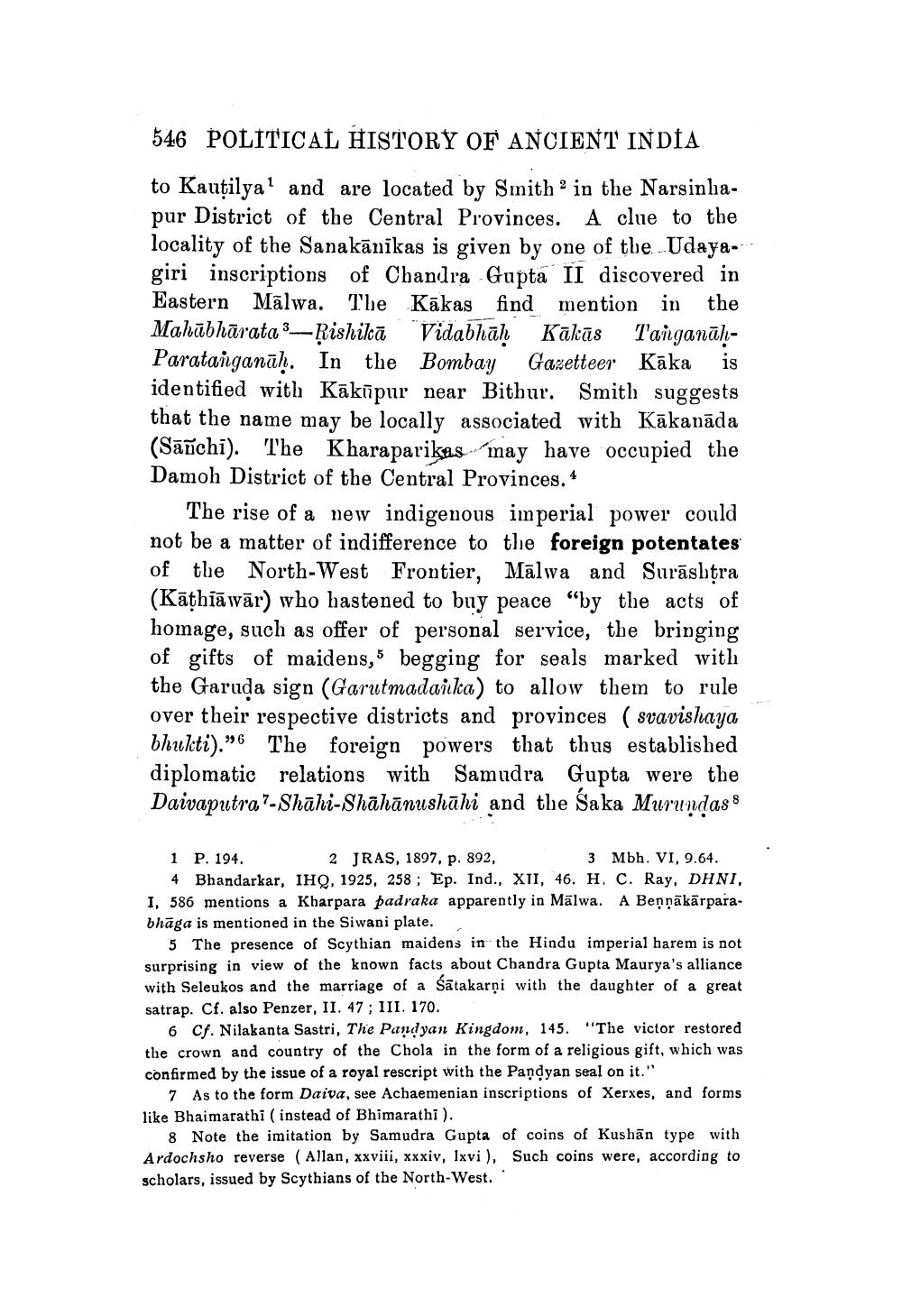________________
546 POLITICAL HISTORY OF ANCIENT INDIA
to Kautilya1 and are located by Smith 2 in the Narsinhapur District of the Central Provinces. A clue to the locality of the Sanakānīkas is given by one of the Udayagiri inscriptions of Chandra Gupta II discovered in Eastern Malwa. The Kākas find mention in the Mahabharata 3-Rishika Vidabhaḥ Kākās TanganaḥParatanganaḥ. In the Bombay Gazetteer Kāka is identified with Kakupur near Bithur. Smith suggests that the name may be locally associated with Kākanāda (Sanchi). The Kharaparikas may have occupied the Damoh District of the Central Provinces. *
The rise of a new indigenous imperial power could not be a matter of indifference to the foreign potentates of the North-West Frontier, Malwa and Surashtra (Kathiawar) who hastened to buy peace "by the acts of homage, such as offer of personal service, the bringing of gifts of maidens, begging for seals marked with the Garuda sign (Garutmadanka) to allow them to rule over their respective districts and provinces (svavishaya bhukti)." The foreign powers that thus established diplomatic relations with Samudra Gupta were the Daivaputra-Shahi-Shāhānushāhi and the Saka Murundas
5
1 P. 194.
2 JRAS, 1897, p. 892,
3 Mbh. VI, 9.64.
4 Bhandarkar, IHQ, 1925, 258; Ep. Ind., XII, 46. H. C. Ray, DHNI, I, 586 mentions a Kharpara padraka apparently in Malwa. A Benṇākārparabhaga is mentioned in the Siwani plate.
5 The presence of Scythian maidens in the Hindu imperial harem is not surprising in view of the known facts about Chandra Gupta Maurya's alliance with Seleukos and the marriage of a Satakarni with the daughter of a great satrap. Cf. also Penzer, II. 47; III. 170.
6 Cf. Nilakanta Sastri, The Pandyan Kingdom, 145. "The victor restored the crown and country of the Chola in the form of a religious gift, which was. confirmed by the issue of a royal rescript with the Pandyan seal on it."
7 As to the form Daiva, see Achaemenian inscriptions of Xerxes, and forms. like Bhaimarathi (instead of Bhimarathi).
8 Note the imitation by Samudra Gupta of coins of Kushan type with Ardochsho reverse (Allan, xxviii, xxxiv, lxvi), Such coins were, according to scholars, issued by Scythians of the North-West.




